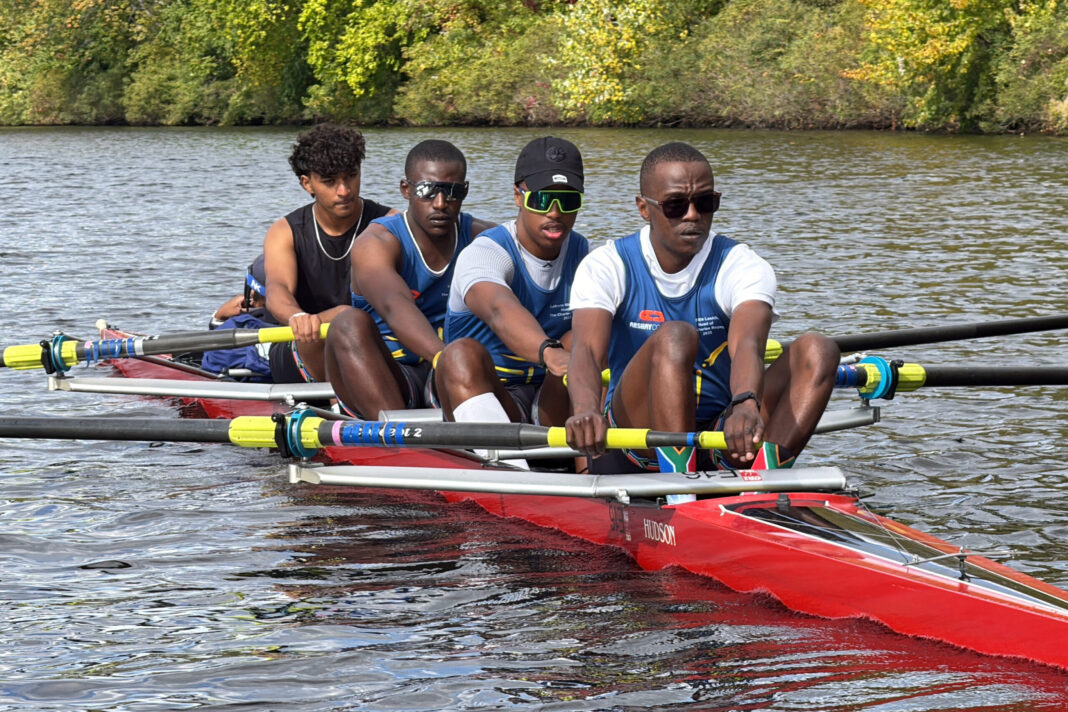Breaking Boundaries: South African Rowers Make History at the Head of the Charles Regatta
BOSTON (AP) — This weekend, four South African rowers are carving a historic path at the prestigious Head of the Charles Regatta in Boston, becoming the first crew of color from their country to compete on an international stage. This moment represents more than just a race; it embodies a significant cultural shift in a sport that has long been synonymous with exclusivity and a lack of diversity.
A Multinational Effort for Inclusivity
The participation of these athletes is part of a broader multinational effort aimed at expanding access to one of the world’s most elite sports, traditionally dominated by white athletes. The 60-year-old regatta is now stepping into a future that emphasizes inclusivity and diversity, challenging the barriers that have historically kept many would-be rowers on the sidelines.
The Historical Context of Rowing
Rowing’s roots can be traced back to Englishmen who colonized South Africa and the United States. However, this history is marred by exclusion, as large swaths of the local populations were systematically barred from engaging in recreational activities on the water. In recent years, advocates have mobilized to address this exclusion, leading to numerous firsts in representation at the Charles. Examples include the first all-Black women’s 8+ crew from the U.S., an indigenous 4+, and a native women’s team, all striving to reshape the narrative surrounding rowing.
Role Models and Overcoming Challenges
Among those making history is Lwazi-Tsebo Zwane, a 23-year-old rower hailing from Germiston, South Africa. Competing in the Men’s Championship 4+ event, Zwane and his teammates are acutely aware of the role models they have become for younger generations interested in rowing. He reflects on the multitude of challenges faced by athletes like him, stating, “There’s been a lot of pitfalls, there’s been a lot of barriers.”
Many of these obstacles stem from the societal legacies of apartheid in South Africa and similar discriminative practices in the U.S., which have contributed to a narrative fraught with violence and oppression. Zwane seeks to change this narrative, asserting, “There is a different story for us, but doing the work to get there is not an easy feat.”
Access Issues and Structural Limitations
Arshay Cooper, a key advocate in this movement, emphasizes that the issues faced by underrepresented rowers are not indicative of a lack of talent, but rather a lack of access. Both in America and South Africa, rowers who are not white or from affluent backgrounds encounter significant barriers, such as the high costs associated with rowing equipment and limited access to reliable waterways. For instance, a single rowing shell can cost tens of thousands of dollars, making entry into the sport financially prohibitive for many.
Historically, competitive rowing has been dominated by elite institutions, often inaccessible to individuals from working-class or marginalized backgrounds. A 2016 analysis by U.S. Rowing found that the typical rower is often perceived as “white and from a middle or upper-class suburban community.” Recent studies reveal stark disparities among collegiate rowers, with minimal representation of Black and Hispanic athletes.
Visibility Matters
Denise Aquino, co-founder of the nonprofit podcast Rowing in Color, highlights the importance of visibility in a sport often devoid of diversity. For many athletes of color, competing in rowing often means being the sole representative of their community in a boat. The initiative seeks not only to change who participates in rowing but also to use that platform to raise awareness about important social issues.
Aquino reflects on the urgent need for change in light of recent U.S. government policies aimed at limiting diversity, equity, and inclusion initiatives. “We’re definitely feeling that sense of fear, but also we’re going to do it anyway,” she says, emphasizing that their efforts are crucial for representation across all ages.
Connecting with the Water
For South African rowers, access to practice facilities is a significant challenge. Coach Michael Ortlepp notes that many of his university athletes reside in previously segregated townships where reliable public transportation is a rarity. Injuries stemming from gang violence or instability in their neighborhoods can also prevent athletes from attending practice.
Zwane shares that his journey to the boathouse often involves multiple bus transfers, a stark contrast to the well-maintained facilities along the Charles River, which he describes as a luxury. “This is — from my perspective, from a lot of kids who understand how it is to grow up from my place — it’s a luxury. If anything, it’s a once-in-a-lifetime experience,” he states, illustrating the stark differences in their realities.
The Structural Support Behind Change
With the support of Cooper’s foundation, Ortlepp’s rowing association has seen notable growth, expanding from eight rowers to 45 within three years. Funding has also played a crucial role in addressing logistical challenges, including the provision of transportation for athletes.
As the South African rowers prepare to compete, they not only embody a historic moment in rowing but also represent a broader movement toward inclusivity and access in a sport that has long resisted change. Each stroke they take on the Charles River is a testament to their resilience and the transformative potential of rowing.



